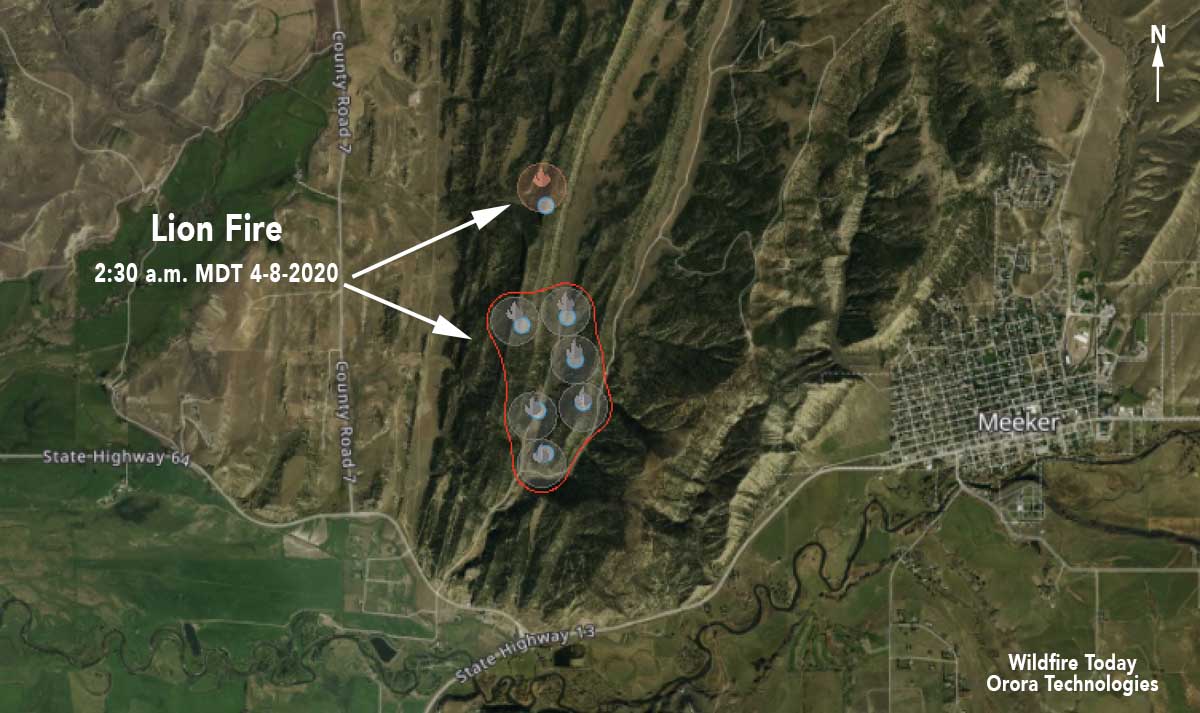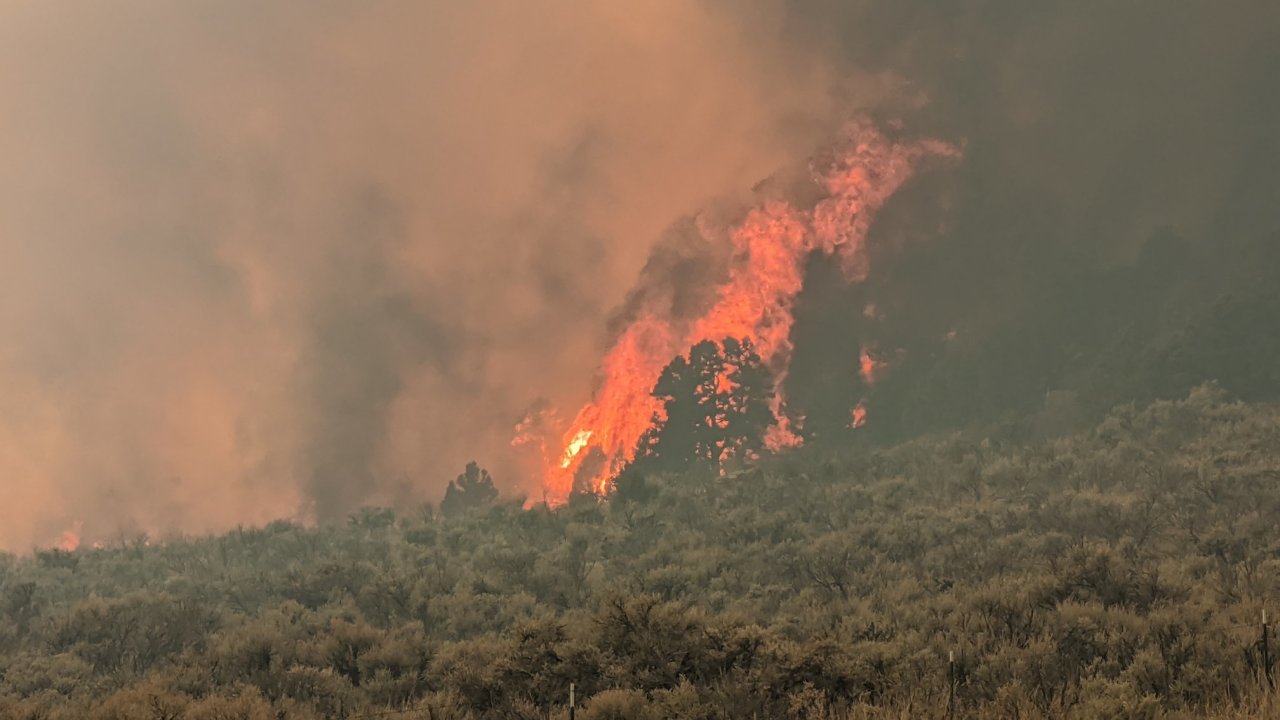
An informal After Action Review has been produced for the Lion Fire that burned about 229 acres west of Meeker, Colorado on April 7. The fire was attacked by the Meeker Volunteer Fire Department, Bureau of Land Management, and the Colorado Division of Fire Prevention and Control. By the end of the day firefighters had stopped the spread. Investigators determined that it started near a mobile home which was consumed in the fire. Several outbuildings and vehicles were also destroyed, according to Meeker Fire Chief Luke Pelloni.
Below is the ARR, distributed by the Zone Fire Management Officer:
As many of you know we had the Lion Fire last week just west of Meeker involving multiple jurisdictions/agencies. I was tasked with letting you all know how things went as far as COVID-19 measures and mitigation’s.
We have taken multiple steps in our station to limit and minimize exposure to firefighters as we are entering fire season. I believe there have been lots of good discussions and decisions made in regards to COVID-19. However, just like in everything we do the plan looks good on paper until the smoke is flying in the air. Listed below are some of the lessons learned from on the ground experiences last week.
- Social distancing is very tough in stressful situations. The crew discussed social distancing before leaving for the fire and to try and abide by the guidelines, upon arrival multiple structures/vehicles were burning and instincts to protect life and property take over.
- When evacuating public, maintaining distance is difficult when property/landowners are panicked and looking for answers and guidance.
- When working with multiple agencies the COVID-19 mitigation measures and messages have varied widely and are hard to enforce or maintain.
- Briefings are hard to conduct in the field with large crowds and maintain the appropriate distance that is recommended. We usually don’t have microphones or platforms in initial attack so harder to hear and voice critical information to multiple crews.
- Once dispatched we utilized four vehicles with eight firefighters. This idea seemed like a good idea until arrival and the parking and safety areas for vehicles was minimal. It added a bit of cluster you could say to the initial arrival to the incident.
- Upon arrival personnel jumped into different trucks and engines to engage on the fire creating more “contaminated” surfaces by different people at different times of the incident.
- It is very difficult to keep equipment sanitized throughout an incident (examples: truck radios, hand tools, chainsaws, steering wheels, compartment doors, etc.)
- A few individuals did wear masks and experienced a harder time communicating to one another thus decreasing the distance between individuals. The people who did wear masks seemed to be touching their faces and adjusting masks more.
These are a few of the lessons or experiences that we noticed on our first wildfire of the year. I think we are taking adequate measures to address issues and potential situations that crews will experience this summer. I think the list above will be some of the issues or challenges that firefighters will encounter on incidents. One concern I have is the ability to sanitize and clean work areas. We have spent an entire day trying to purchase items but our current credit card procedures are making that difficult to achieve. If anyone has any questions or concerns feel free to give me a shout anytime. Hope everyone is safe and making it through these interesting times.
End of AAR

